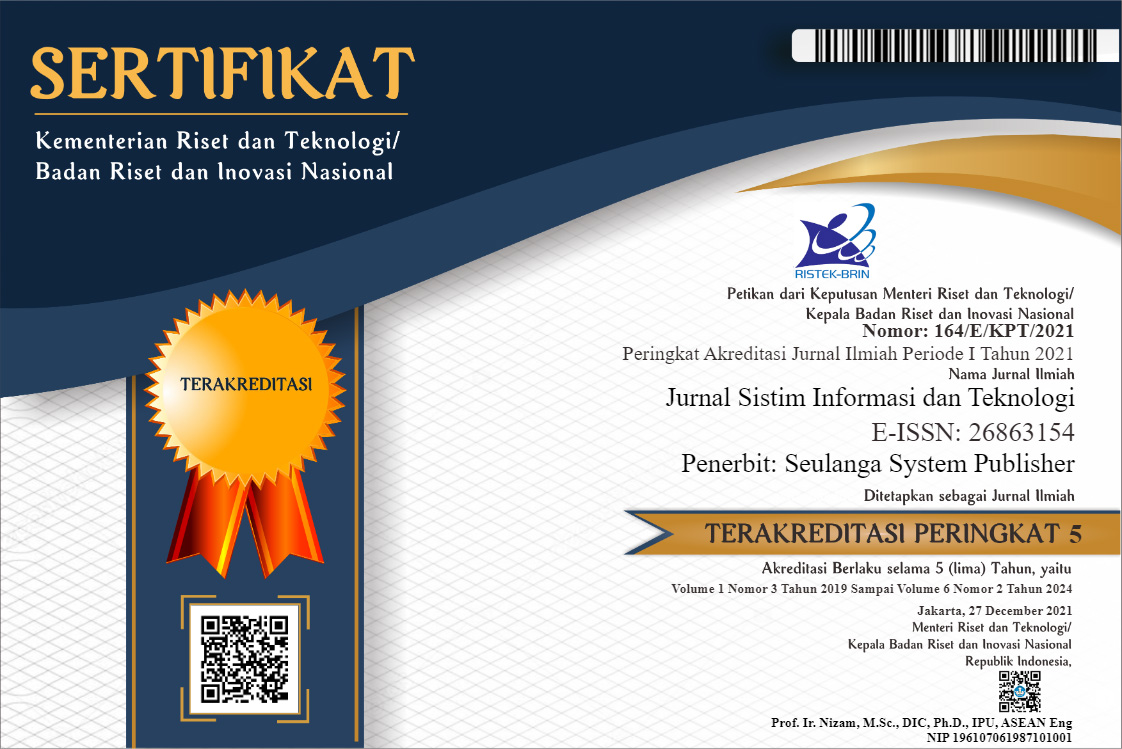Simulasi dalam Optimalisasi Pengadaan Barang menggunakan Metode K-Mean Clustering
DOI:
https://doi.org/10.37034/jsisfotek.v3i4.79Keywords:
Inventory of Goods, K-Mean Clustering, Data Mining, Cluster, Optimal SalesAbstract
Products provided by a store have an influence on store sales. Consumers will be attracted to stores that provide products according to their wants and needs. The purpose of this research is to find out what ornamental flower products are most in demand by consumers, in demand by consumers and less desirable to consumers. Keywords: inventory of goods, K-Mean Clustering, Data Mining, cluster, optimal. Store managers can get information about goods that have been depleted of inventory stock to be updated immediately. The method used in this study is the K-Mean Clustering method which belongs to one of the branches of Data Mining. The data used in the study is data from January 2020 to December 2020 as many as 100 pieces taken from naafilah official shop, Padang. The data variables used in the entry of goods are the year, product name, price and amount sold. Furthermore, the data is processed using Rapid Miner software. The first stage of processing is to determine the value of clusters randomly, in this study researchers divided the cluster values into 3 groups. Next, the centroid value of each group will be determined. Centroid is derived from the minimum value, middle value and maximum value of the data provided. Then, the cluster process is calculated using the euclidean distance formula. Cluster calculations are done by calculating the closest distance to the data. The final result of this study is to find out the best-selling, best-selling and less-selling ornamental flowers, so that sellers can optimize the provision of ornamental flowers for the future.
References
Mirantika, N. (2021). Penerapan Algoritma K-Means Clustering Untuk Pengelompokan Penyebaran Covid-19 di Provinsi Jawa Barat. Nuansa Informatika, 15(2), 92–98. doi:10.25134/nuansa.v15i2.4321
Ependi, U., & Putra, A. (2019). Solusi Prediksi Persediaan Barang dengan Menggunakan Algoritma Apriori (Studi Kasus: Regional Part Depo Auto 2000 Palembang). Jurnal Edukasi Dan Penelitian Informatika (JEPIN), 5(2), 139. doi:10.26418/jp.v5i2.32648
Gustientiedina, G., Adiya, M. H., & Desnelita, Y. (2019). Penerapan Algoritma K-Means Untuk Clustering Data Obat-Obatan. Jurnal Nasional Teknologi Dan Sistem Informasi, 5(1), 17–24. doi:10.25077/teknosi.v5i1.2019.17-24
Kamila, I., Khairunnisa, U., & Mustakim, M. (2019). Perbandingan Algoritma K-Means dan K-Medoids untuk Pengelompokan Data Transaksi Bongkar Muat di Provinsi Riau. Jurnal Ilmiah Rekayasa Dan Manajemen Sistem Informasi, 5(1), 119. doi:10.24014/rmsi.v5i1.7381
Sinaga, K. P., & Yang, M.-S. (2020). Unsupervised K-Means Clustering Algorithm. IEEE Access, 8, 80716–80727. doi:10.1109/access.2020.2988796
Astuti, D. (2019). Penentuan Strategi Promosi Usaha Mikro Kecil Dan Menengah (UMKM) Menggunakan Metode CRISP-DM dengan Algoritma K-Means Clustering. Journal of Informatics, Information System, Software Engineering and Applications (INISTA), 1(2), 60–72. doi:10.20895/inista.v1i2.71
Yang, M.-S., & Sinaga, K. P. (2019). A Feature-Reduction Multi-View k-Means Clustering Algorithm. IEEE Access, 7, 114472–114486. doi:10.1109/access.2019.2934179
Syakur, M. A., Khotimah, B. K., Rochman, E. M. S., & Satoto, B. D. (2018). Integration K-Means Clustering Method and Elbow Method For Identification of The Best Customer Profile Cluster. IOP Conference Series: Materials Science and Engineering, 336, 012017. doi:10.1088/1757-899x/336/1/012017
Singh, S., & Singh, P. (2020). Speaker specific feature based clustering and its applications in language independent forensic speaker recognition. International Journal of Electrical and Computer Engineering (IJECE), 10(4), 3508. doi:10.11591/ijece.v10i4.pp3508-3518
Rachma, A., Aden, A., & Rusdiana, Y. (2019). Analisis Cluster Menggunakan Algoritma K-Means Cluster Untuk Culstering Jenis Penyakit Menular Pada Puskesmas Di Kecamatan Kota Tangerang. Jurnal Saintika Unpam : Jurnal Sains Dan Matematika Unpam, 2(1), 15. doi:10.32493/jsmu.v2i1.2915
Sinaga, L., Ahmad, A., & Safii, M. (2019). Penerapan Data Mining Pada Jumlah Pelanggan Perusahaan Air Bersih Menurut Provinsi Menggunakan Metode K-Means Clustering. Jurnal RESISTOR (Rekayasa Sistem Komputer), 2(2), 119–125. doi:10.31598/jurnalresistor.v2i2.418









